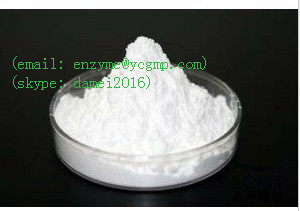| Message: | B-square Local Anesthetic Drugs Bupivacaine for Anti-paining Bupivacaine
Basic Information
Name: Bupivacaine
CAS No.: 38396-39-3
Formula: C18H28N2O
Molecular Weight: 288.43
Properties:White crystalline powder, odourless, taste bitter. Easily dissolved in ethanol, dissolved in water, slightly soluble in chloroform, hardly soluble in ether.
The aqueous solution pH 4.5 ~ 6.0.
Synonyms: Anekain;2-Piperidinecarboxamide, 1-butyl-N-(2,6-dimethylphenyl)-, (+-)-;2-Piperidinecarboxamide, 1-butyl-N-(2,6-dimethylphenyl)-;1-Butyl-2,6-pipecoloxylidide;DL-Bupivacaine;Carbostesin;2180-92-9;1-butyl-N-(2,6-dimethylphenyl)piperidine-2-carboxamide;dl-1-Butyl-2,6-pipecoloxylidide;2,6-Pipecoloxylidide, 1-butyl-;
Density: 1.032 g/cm3
Boiling Point: 423.4 °C at 760 mmHg
Flash Point: 209.9 °C
Application: Infiltrating anesthesia; Nerve block anesthesia
Description:
Bupivacaine hydrochloride injection, USP is available in sterile isotonic solution for injection via local infiltration, peripheral nerve block, and caudal and lumbar epidural blocks. Solution of Bupivacaine hydrochloride injection, USP may be autoclaved. Solution is clear and colorless.
Applications:
Bupivacaine is related chemically and pharmacologically to the aminoacyl local anesthetics. It is a homologue of mepivacaine and is chemically related to lidocaine. All three of these anesthetics contain an amide linkage between the aromatic nucleus and the amino, group. They differ in this respect from the procaine-type local anesthetics, which have an ester linkage.
Bupivacaine hydrochloride injection, USP - Sterile isotonic solution containing sodium chloride. The pH of the solution is adjusted to between 4 and 6.5 with sodium hydroxide or hydrochloric acid.
Bupivacaine is an anesthetic (numbing medicine) that blocks the nerve impulses that send pain signals to your brain.
|
 my account
my account
 log out
log out
 my account
my account
 log out
log out
